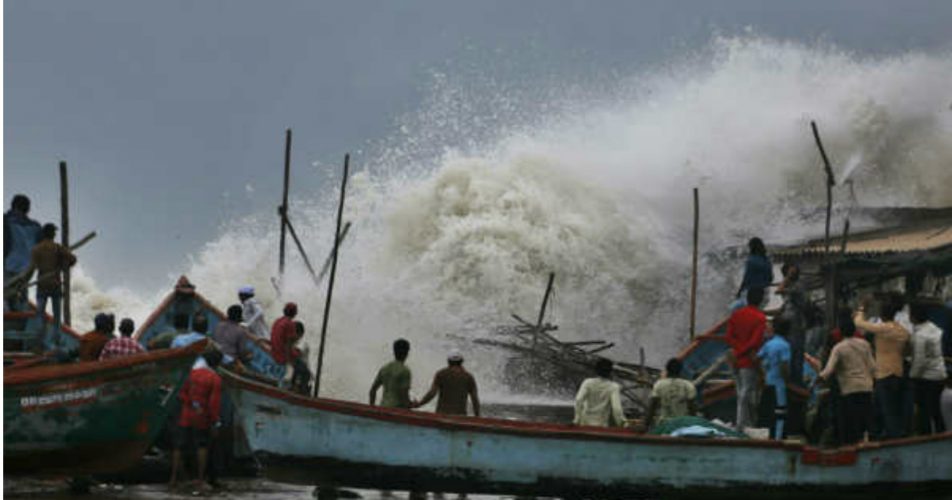
At present, a Depression can be marked over Comorin Areas. This system is expected to intensify into a Deep Depression by today evening and will move in Northwest Direction over Lakshadweep area.
Earlier, a Cyclonic Circulation had formed over Southwest Bay of Bengal off Sri Lanka coast. It later induced a Low Pressure Area which further intensified into a Well-Marked Low Pressure Area yesterday and finally turned into a Depression today.
We expect thissystem to intensify into Cyclone ‘Maha’in the next 48 hours. This Cyclone is expected to move in Northwest direction away from the Indian coast.
However, the weather system would have already given ‘heavy’ to ‘very heavy’ rains over Tamil Nadu. We expect ‘moderate’ to ‘heavy’ rains over Tamil Nadu, Rayalaseema, South India, Karnataka, and Kerala during the next 24 hours.
This is when the sea conditions will remain ‘rough’ to ‘very rough’ along Tamil Nadu, Kerala, and Karnataka coast. Wind speed will also be very high along with the above-mentioned areas for the next 72 hours. Therefore, fishermen are advised to take all precautionary measures to counter the upcoming storm and are advised not to venture into the sea.
This will be the fourth Cyclone in Arabian Sea after the appearance of Cyclone Vayu, Hikka and Kyarr. Cyclone Vayu had made an appearance during the onset of Southwest Monsoon, Cyclone Hikka appeared in the fag end of September, Cyclone Kyarr in October, and now in the first week of November ‘Maha’ has appeared.
Generally, Bay of Bengal remains more active and sees more number of Cyclones in comparison to Arabian Sea. However, this time the opposite has happened. Until now, only one Cyclone has formed over Bay of Bengal this year i.e. Cyclone Fani.
The reason for this unusually large number of cyclones over Arabian sea this year can be the positive IOD (Indian Ocean Dipole) as the country is observing one of the strongest IOD in history. At times, of positive IOD, sea surface temperatures over Arabian Sea is warmer than Bay of Bengal. Warmer sea surface temperature is favorable for the formation of such systems.
Image Credits– OneIndia
Any information taken from here should be credited to Skymet Weather




